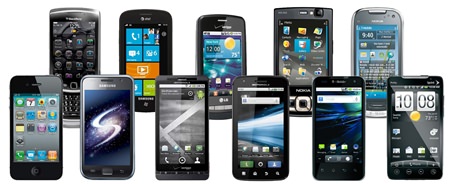Having had a professional photography studio for many years, using all formats of film cameras, I was very reluctant to join the digital movement. However, like gravity, the effects of the digital age could not be ignored, and I joined the evolution (as opposed to ‘revolution’).
The next development in photography I could not have predicted. That was the advent of the phone-cam. Like Dick Tracey’s two way wrist radio, the concept was close to science fiction. But the phone-cam has changed the way we approach the art of taking photographs.

Initially I sneered at so-called photographers holding up their mobile phone and snapping away at functions. With 2 MP, they were lucky to get an image, let alone sharp enough for reproduction purposes.
The next development was the “selfie” which overnight changed normally sane people into narcissistic self-centered people. The ultimate expression of this new development is women using the rearward view function, holding up their mobile phone to apply their make-up!
The initial soft images from the first phone-cams with their 2 MP have also been improved, as the phone manufacturers have now come up with phone-cams with 20 MP. This is more than most compact cameras.
The mobile phone revolution really began in earnest when the BlackBerry came on the market, but it was very quickly superseded by phones from Nokia and the Apple iPhone ranges. Today you must have an iPhone 5 or a Samsung Galaxy S4 to be in the fashion conscious hunt.
However, one of the problems when comparing cam-phones is people tend to read the magic number called megapixels and conclude that it is the deciding parameter between brilliant, good and not so good. 24 MP is better than 12 which in turn better is than 4.
Whilst the above is partly true, it really does depend upon what you want to do with the end result. Are you going to be blowing it up to the size of a barn door, or will it be a 4R (6×4) at most? If you have been hired to produce photographs for billboards, then look at a camera with megapixels coming out its strap swivels. Otherwise, anything from six to 10 MP is more than adequate for the cam-phone.
There is no ignoring just how camera phones have taken over the position previously held by point and shoot cameras. The numbers say it all. By 2003, more camera phones were sold worldwide than stand-alone digital cameras.
In 2005, Nokia became the world’s most sold digital “camera” brand.
In 2006, half of the world’s mobile phones had a built-in camera.
In 2008, Nokia sold more camera phones than Kodak had done with film cameras and became the biggest manufacturer of any kind of camera.
In 2009, camera sales continued to slide as camera phones improved their auto-focus, zoom and low-light features.
In 2010 the worldwide number of camera phones totaled more than a billion and sales of separate cameras continued to decline. Even inexpensive mobile phones were being sold with a camera.
Up to November 2011, US retail sales of entry-level cameras fell 17 percent to 12 million units from 2010. In that same time-frame cam-phone makers sold 95 million in the US.
No, like it or lump it, the cam-phone is here to stay, and the top end models do return sharp images.
So what can you do to get better images from your telephone? The first thing is to remember that you do not have the control over the equipment that you have with a camera. You cannot alter the shutter speed, or the aperture, you have to rely upon the cam-phone to do that for you. You cannot alter the ISO rating either. So what do you have?
You have a screen which shows you almost 100 percent of what you are going to get, while standing some distance from the subject. The cam-phone is making you look more carefully at the total scene. Move closer and get the image to fill the screen and you will have a much better resulting image.
The message is to walk in closer, compose and shoot! And answer the phone as well!




